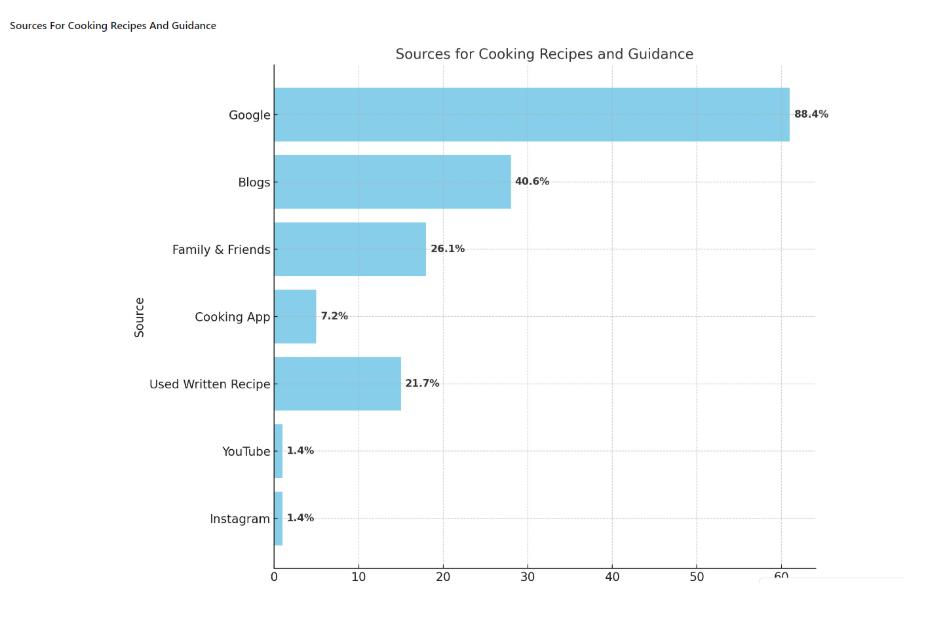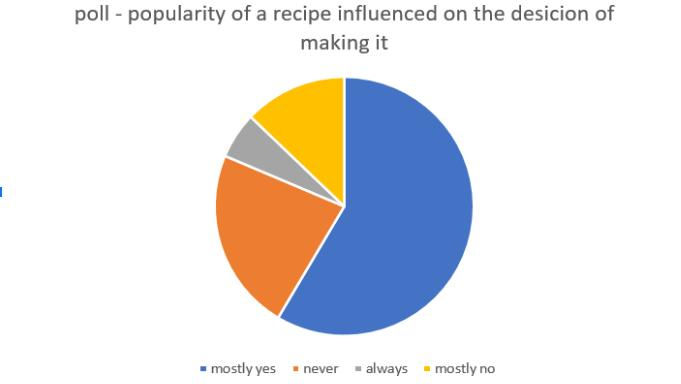Cookeat

Introduction
As part of a college course, we worked on a project to apply UX fundamentals in creating a user-friendly cooking platform. Our aim was to design an intuitive and efficient tool that helps users easily find and follow recipes.
Project information
Introduction
Role - UX Research & Design
Project was created as part of a college course
Defining the problem
Through our brainstorming sessions, we discovered that our family and friends often struggle to find reliable recipes. Even when they do, the instructions are often unclear and difficult to follow. This insight shaped our primary goal: to develop a cooking platform that helps users find recipes tailored to their needs while providing clear, step-by-step guidance for a seamless cooking experience.
My Role
I conducted competitor research using SimilarWeb.com to analyze leading cooking platforms and ensuring alignment between these insights and findings from surveys and user interviews. As part of this process, I designed a new filtering wireframe to better address user needs and preferences, contributing to the comprehensive user flow redesign in December 2024.
Research Process
Competitor research - searching for outlines in potential competitors (etc. comparing the age group to see if it is similar to understand our target audience better).
Survey -Creating a survey to understand the points and the needs of the users and better understand the problem.
User Interview - Conducting user interviews to identify similarities and guiding lines in the field and better learning about our user's habits.
Competitor Research
I used SimilarWeb.com to gather data on potential competitors for our project. We focused on "Kitchen Stories" and "All Recipes" for this analysis as they were in the top 10 in their category at the time. We wanted to analyze similarities between these platforms.

All Recipes
Main age group - 25-34 (22 %)
Total visits - 7.4 millions
Traffic source - organic search (62 %)
Avg. per visit - two minutes

Kitchen stories
Main age group - 25 -34 (30. 56%)
Total visits - 3.6 millions
Traffic source - search engines (51.12 %)
Avg. per visit - 34 seconds

User Survey
We began by gathering demographic information (gender and age) from prospective users. Subsequently, we inquired about their cooking habits, including how often they cook, how they plan their meals, and where they search for recipes. Additionally, we aimed to understand the challenges they encounter while cooking. To accomplish this, we asked:
"Does the recipe's popularity (rating) influence your choice?"
"Where do you find inspiration and recipes for what to cook?"
Our findings indicated that the popularity (rating) of the recipe heavily influences the decision of whether to prepare it or not. As the survey responses were obtained from our family and friends, who form a homogeneous group (a group where the characteristics of the participants are almost identical), we decided to seek additional sources of data. Using SimilarWeb.com, we sought to gather comparable data from a larger and more diverse group of potential users.

User Interviews
We aimed to ask questions that would help us understand our users' decision-making processes, needs, and habits. We talked to 5 people, all women, and students around the age of 25. The questions were open-ended, starting with getting to know the person to recognize their habits (and struggles). Some of the questions were: "What is a reliable recipe in your opinion?" "What do you find to be a struggle while cooking, and how do you solve it?" "What works for you while cooking?" We found that when it comes to choosing a recipe, the following factors are taken into consideration and can create difficulties.
Question : What alternatives do you use when you don’t have/eat the required ingredients for a recipe?
Answer: I am vegan and searching for a vegan alternative in a recipe can take a long time as there aren’t many vegan alternatives based on my experience
Question: How do you adjust recipes based on the number of people you are cooking for?
Answer : Sometimes I see something good and I want to make a smaller amount of it. i am struggling to calculate the right amount out of the ingredients that will fit my needs
Potential Soloution
In summary, our user research and survey results led to the following conclusions:
Amount of Dishes: Users will have an option to choose the right amount of food they would like to make.
Ingredient Alternatives: Providing options that cater to users' preferences or dietary needs.
Roni
Age - 26
Based in Tel-Aviv
Source of Knowledge
- Her mother
- Instagram reels her friends send her
- internet Blogs
Persona
Motivation level
Roni's motivation level of cooking is low.
She thinks of cooking as a waste og time in her stressing
routine and she find it hard to adjust recipes to her diet.
OKR
After collecting these data and deciding on our main user persona, we decided that our intended solution would be built on these features:
The recipe will be straightforward with clear instructions, ensuring users stay on track without any issues.
Finding ingredients and tools will be easy thanks to intuitive search and filter features.
Customizing the amount of dishes based on the user refrences
Offering efficient solutions based on diet and needs, saving users from common cooking dilemmas and time.
Roni's User Journey


Signup page

Main page

Recipe page
Wireframes


Signin page
Menu page


onboarding
Filter page

Change ingredients

Recipe after change
Feauture Steps
Given the time constraints, comprehensive user testing on our design was not possible. To obtain some insights and confirm the clarity and effectiveness of our design, I suggested a "First Click Testing" session.
This usability testing method measures the initial click points of users on a webpage or app to assess its intuitiveness. It helps us observe the first interactions of users with the design, thereby aiding our understanding of the interface's intuitiveness and navigability.
Conclusion
Initially, we thought an app would be the best solution. However, our interviews and surveys revealed this assumption was incorrect. This project imparted a crucial lesson: we are not our users. Decisions should always rely on thorough findings from the research.

